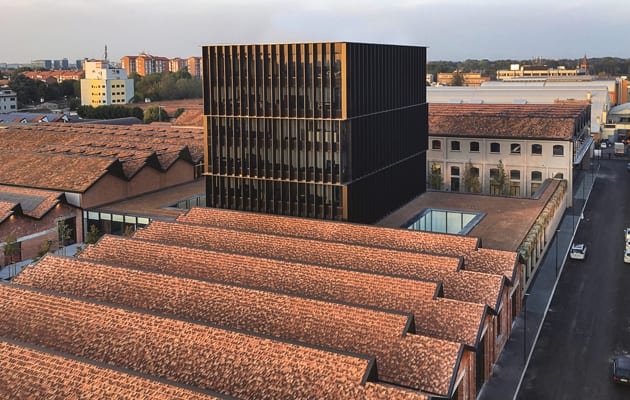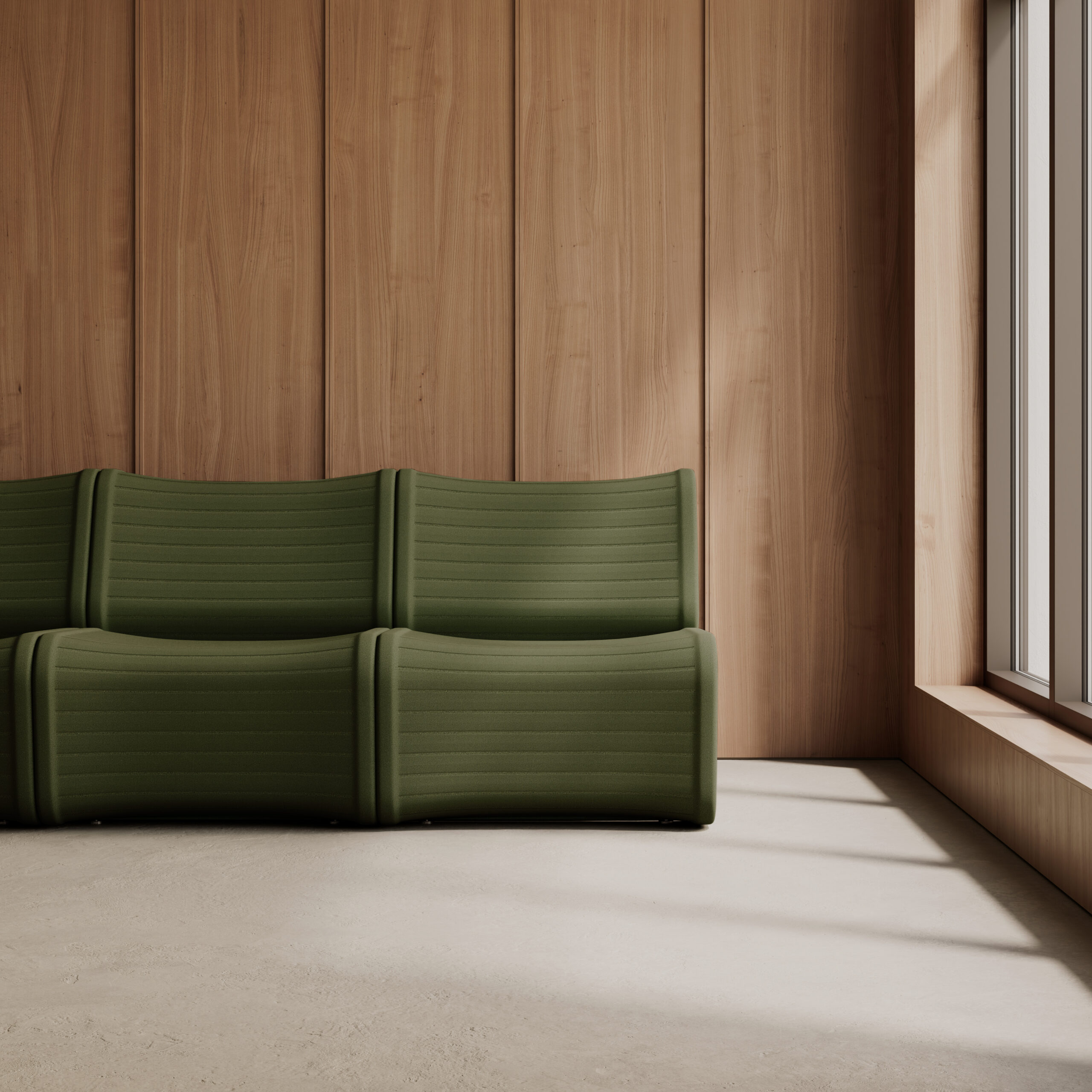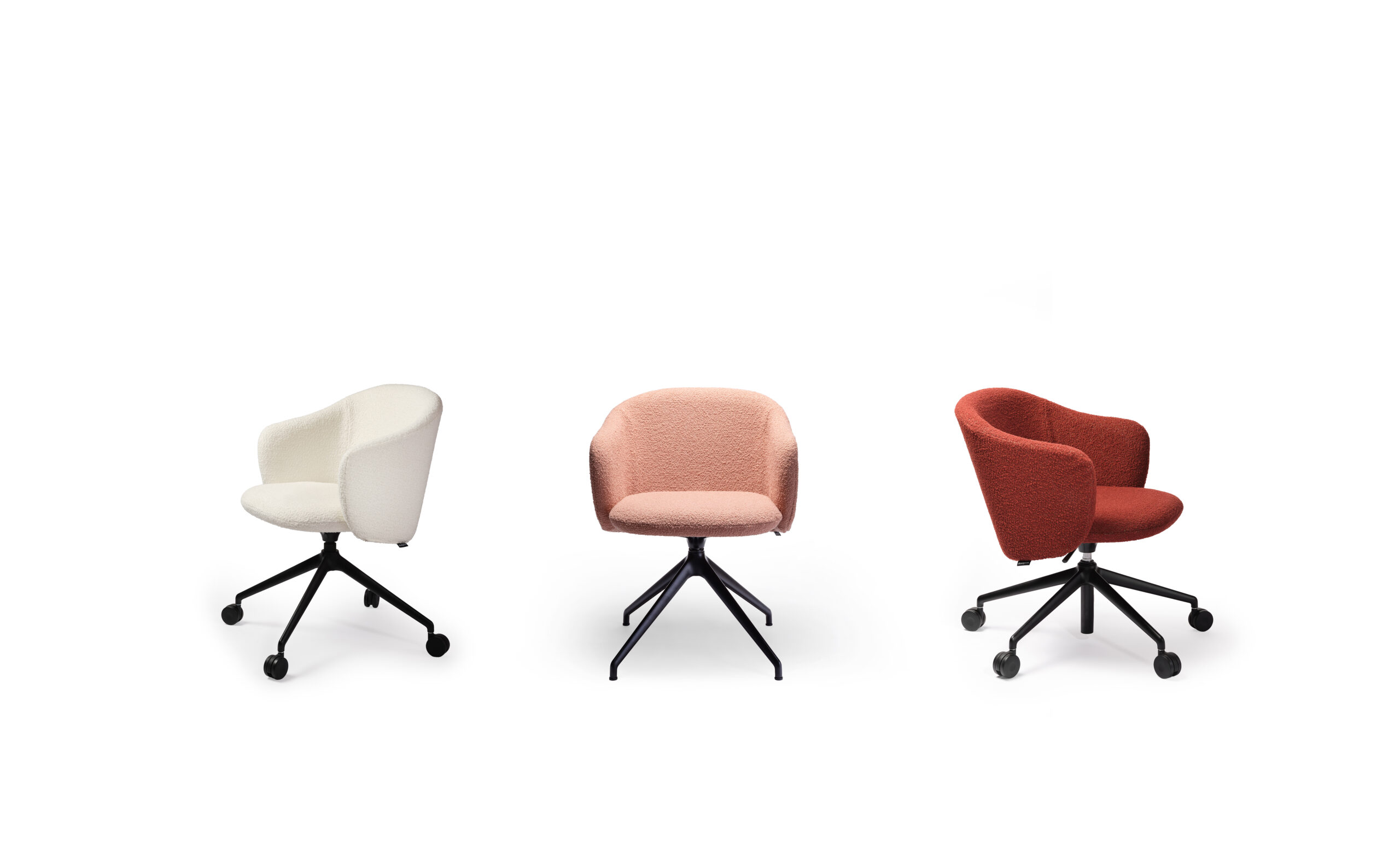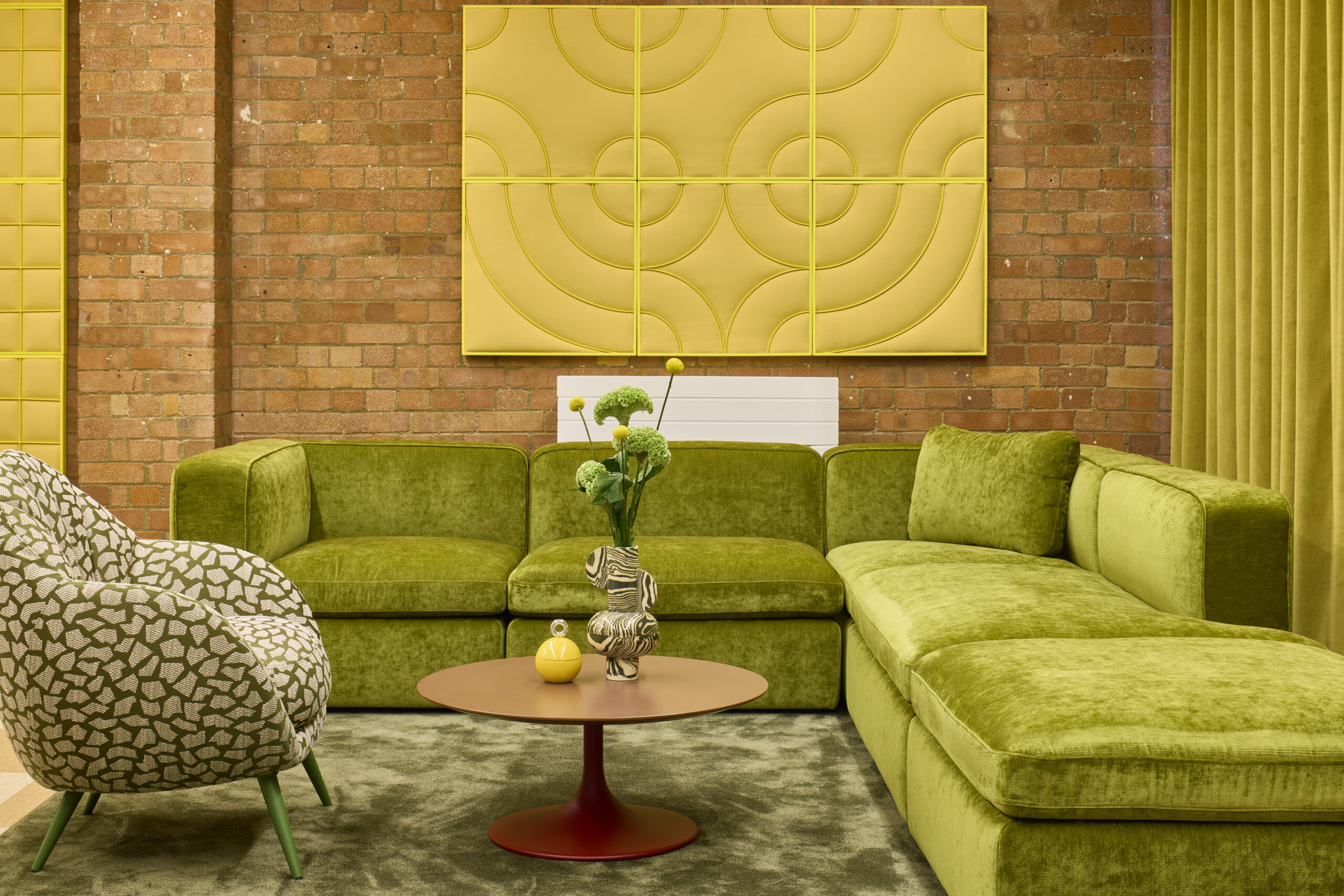 |||
|||
Space is something of a luxury these days. Particularly in London, where office measurements are shrinking at an astonishingly fast pace as the price tag storms in the opposite direction. However, in the east of Italy’s global capital of fashion and design (Milan – you guessed it) is an overwhelmingly spacious occupancy that sees a formerly abandoned industrial warehouse transformed into the new headquarters for Gucci.
The development, designed by Milan-based studio Piuarch, sees a replenishing makeover of the old Caproni factory. It’s a mammoth plot built in 1915 that previously housed the Italian aircraft manufacturer founded by engineer and designer Gianni Caproni in 1908. Now, the renovated and extended industrial structure is a Gucci powerhouse hub with offices, showrooms, a restaurant, cafe and even large hangars to host events and fashion shows.
Francesco Fresa, Germán Fuenmayor, Gino Garbellini and Monica Tricario founded Piuarch in 1996, setting out to merge their different experiences and backgrounds into a shared platform for architecture.The practice’s wide-spanning portfolio includes numerous architectural and interior design projects for prestigious fashion brands including Dolce & Gabbana, Givenchy, Les Hommes – and, most recently, Gucci.
 Exterior courtyards provide extra breakout and event spaces at Piuarch’s Gucci HQ. All Photos: Andrea Martiradonna
Exterior courtyards provide extra breakout and event spaces at Piuarch’s Gucci HQ. All Photos: Andrea Martiradonna
Where the latest offering is concerned, it’s important to note the studio’s infatuation with the old Caproni factory – so much so that the team were in fact working on the building before Gucci chose it for its new headquarters. “We were completely fascinated by this 1920s plant and by its history. That is, the history of a visionary man who first started to build airplanes in Italy,” explains Fresa, one of the four founding partners. “But he did not just build airplanes: he created a small city, equipped with different functions and facilities, so we wanted this amazing place to preserve the same features of excellence.”
It’s more appropriate to see this development as a recovery project, due to the team’s efforts to focus on enhancing the 1920s architecture rather than starting afresh. Though the factory buildings date back to the early decades of the last century, there was a point in which a cluster of small buildings were later added in the 1950s that “generated conflict with the original aesthetic”, says Fresa. After demolishing these anachronisms, enough space was left for the team to build a contemporary border along the main street that complemented its historical past, ensuring greater uniformity.
Renovating yet keeping in line with the original characteristics of the factory and its location was vital for this development. “The main goal was to preserve the identity of this complex – that is, a symbol of Italian excellence, originally relating to the manufacturing sector and later to the creative process of fashion,” says Fresa.
“The old Caproni factory has always been a combination of different functions linked to each other, where workspaces and facilities coexisted. The recovery of the historical design was achieved through a meticulous preservation of the main architectural features of the 1920s.”
 Leafy courtyards link the hangars and the new buildings
Leafy courtyards link the hangars and the new buildings
Externally, the distinctive shed buildings – the first element of the redevelopment project, featuring modular structural bays, exposed brick facades and a spacious layout – have been left in a consistent pattern across the site. Large hangars, which were used to accommodate the nal assembly of the Caproni aircraft and now the brand’s fashion shows, have also been restored and connected through a pedestrian path system which gives way to courtyards and small outdoor squares that provide idyllic outdoor breakout space.
The overall framework features various historical cues and empty spaces that have been preserved throughout the process, along with the addition of a new six-storey tower in which the office space is located. Designed by the studio, this features a modern glass facade covered with a display of sunscreens.
 Huge hangar spaces are deliberately kept decoratively neutral
Huge hangar spaces are deliberately kept decoratively neutral
Taking things inside, Fresa describes the interior as a “functional and useful box” that Gucci can constantly alter and add to. The design, in this case, provides a neutral background and serves as a backdrop for an endless list of settings that could be introduced – which, going by the nature of the fast-paced fashion industry, is highly likely to need to be flexible and undergo frequent modifications.
Fresa adds: “The colours of the seasonal fashion collections establish the outfitting of the atelier and showroom area, while the large hangar is a free hall, designed twice a year for the events during Milan Fashion Weeks.” Meanwhile, the restaurant and office space are highly flexible with a free plan and a more “long-lasting” interior design.
 The Caproni factory retains its place as a landmark of the Milan cityscape
The Caproni factory retains its place as a landmark of the Milan cityscape
You could say that it’s quite unusual to house a space for fashion shows within the same perimeter as a workplace. But it falls within Piuarch’s unique method of brand storytelling and of opening up the space to the public sphere.
Fresa says how it was within Gucci’s brief for the practice to “create a multifunctional complex, which could accommodate different functions”. He explains: “The large hangar is completely dedicated to fashion venues – it acts as a big box where natural lighting is provided by shed roof. Inside, the interior design changes from time to time according to the events and needs. The path’s layout is mainly based on an external pedestrian system that allows the independence of each function.”
The materiality provided a vital element in retaining the original architectural features of the old Caproni factory. This includes the exposed brick facades of the shed buildings, the concrete details and the steel structure – found in the window frames and facade of the six-storey tower with its brise-soleil system – which was painted anthracite grey to “obtain the best uniformity with the other nishes used in the project”, says Fresa.
 The grey steel shed roofs are echoed in the tower’s brise-soleils
The grey steel shed roofs are echoed in the tower’s brise-soleils
As a whole, the project took a completely sustainable direction – achieving a LEED Gold certification. “The project aims to achieve an overall environmental quality:a dense forest, a tree-lined square, common gardens, patios, natural lighting and social spaces for employees,” says Fresa.
In terms of energy performance, he explains how the project allowed an average of 25% savings on energy costs with a share of the annual energy cost offset by renewable energy generated on site. In addition, 20% of water savings were achieved through an advanced water management system, plus over 90% of waste produced by the construction site was recycled.
Sustainability and a exible approach to design – particularly within the workplace – are factors that are currently heavily influencing the industry. It has now become the norm when occupying and utilising a space to keep the future in mind – while at all points taking the environment into careful consideration.
 Saw-tooth roofs at Gucci HQ provide a strong visual identity for the complex
Saw-tooth roofs at Gucci HQ provide a strong visual identity for the complex
“We think that flexibility should be one of the main topics of workspace design; needs always change over time within the same company and the rst interior layout could be imperfect after some years.We therefore design spaces that can be easily transformed,” says Fresa.
“Workspaces should benefit from natural lighting and from unique spaces dedicated to relaxation and social interaction. Finally, the result should be a free plan.”
Subscribe to OnOffice for more great offices and workplaces
Piuarch’s HQ for fashion brand Gucci is bringing new life to a historic aircraft factory in Milan
























